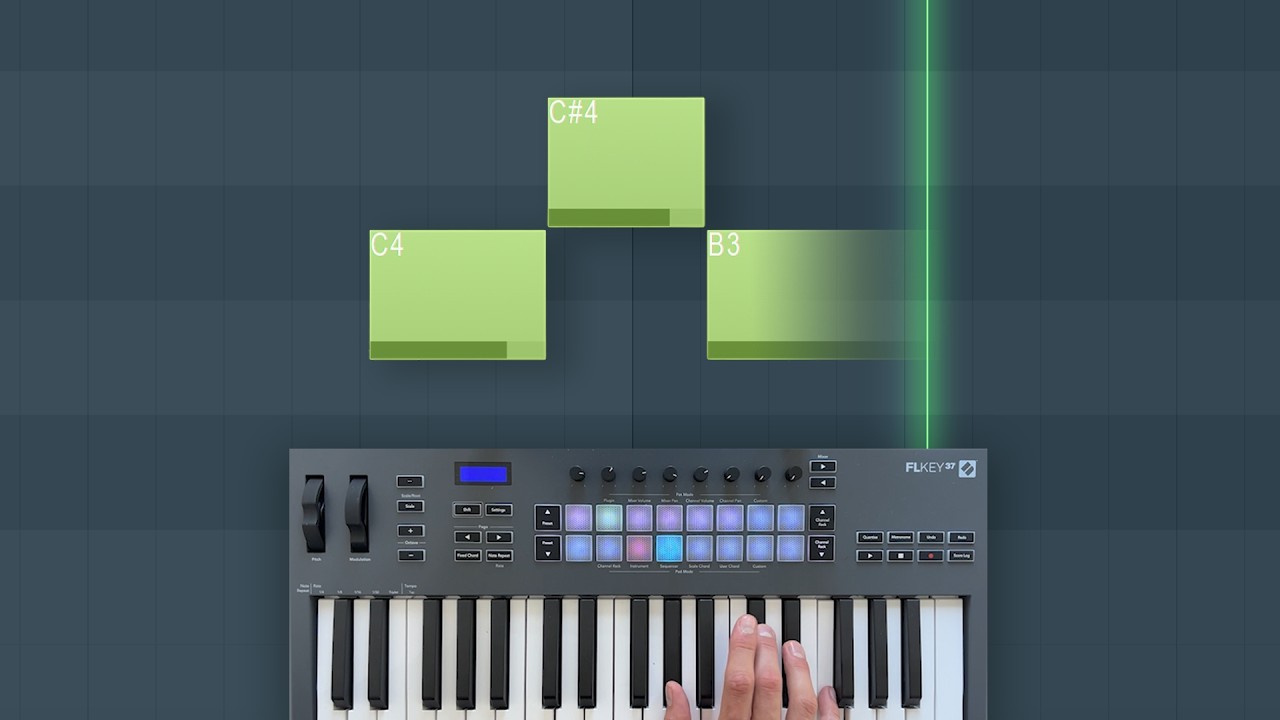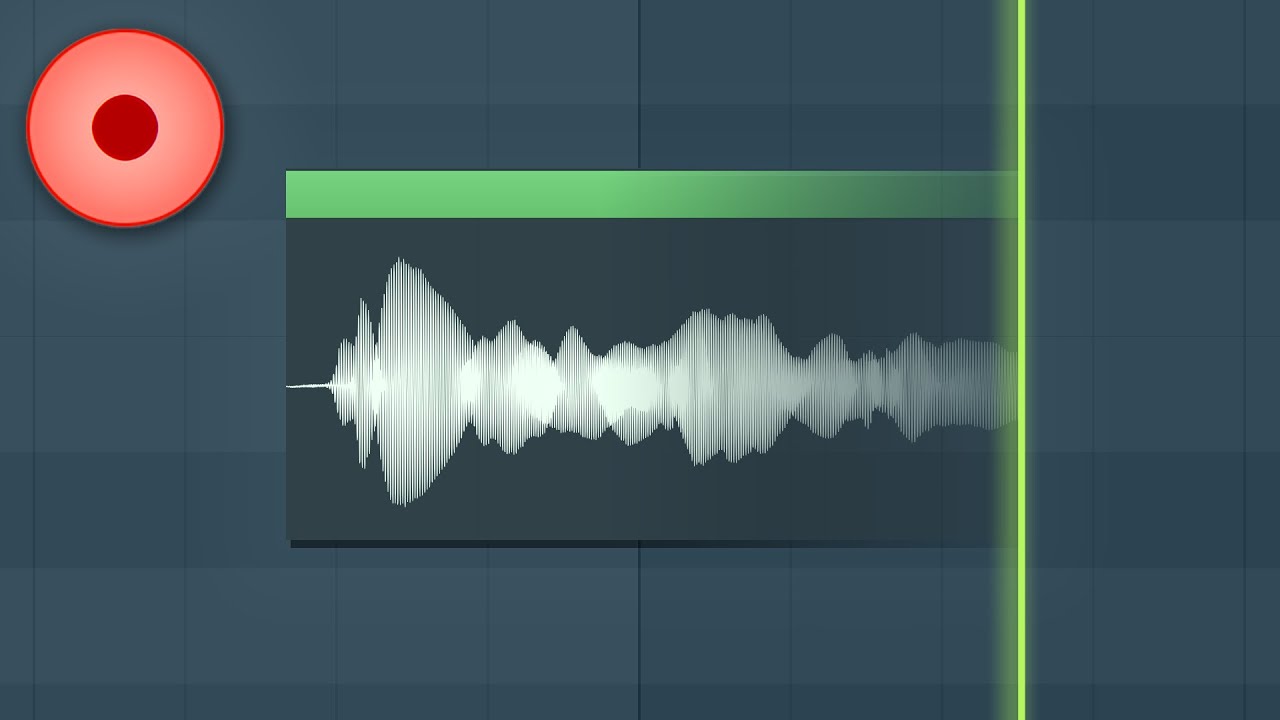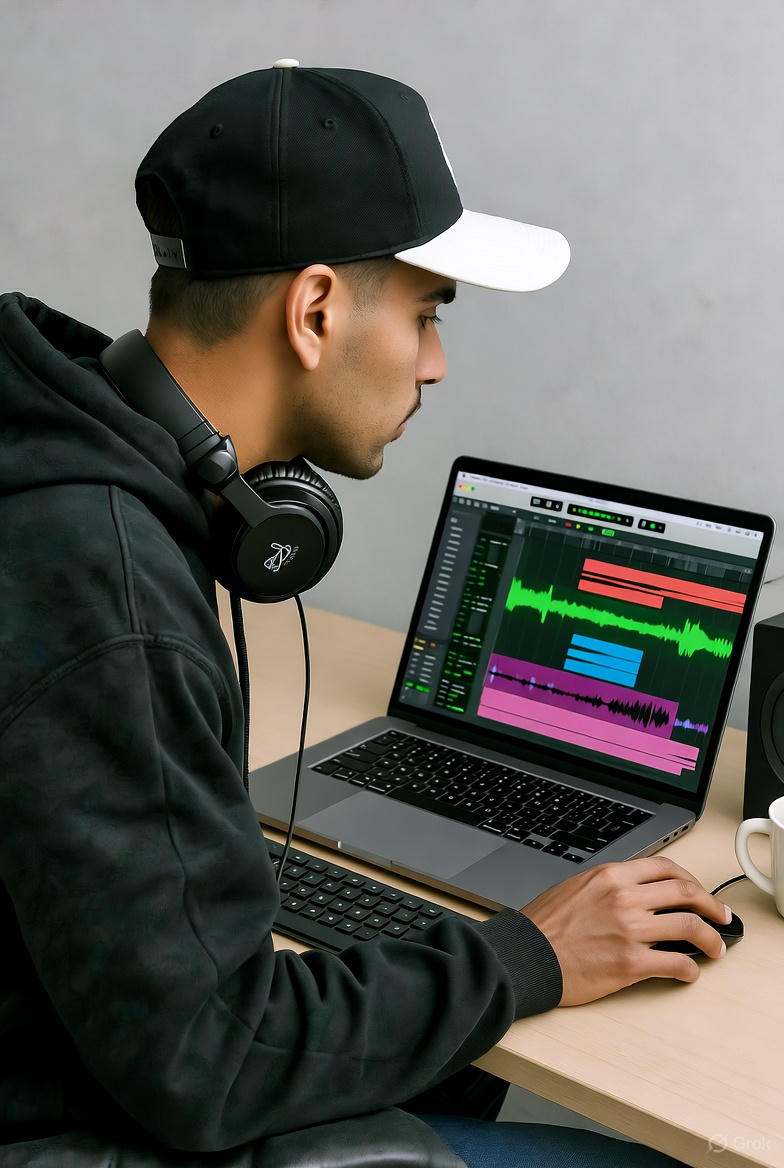!Let Us HELP YOU!
We have a lot of curated content on this blog.
Take this simple 20 second Quiz to Help You
Find The Exact Content You Are Looking For!
Mixing music sounds intimidating at first and even professionals agree that getting all the elements to fit together can be tough. Yet, mixing is mostly about balancing and blending individual audio elements until they feel like a single, smooth wall of sound. Most new producers expect secret tricks or fancy gear to be the key, but the biggest results come from mastering a few surprisingly simple concepts anyone can learn quickly.
Table of Contents
- Understand Basic Mixing Concepts
- Organize Your Tracks For Clarity
- Balance Levels For A Clean Mix
- Use Eq To Enhance Sound Quality
- Apply Compression For Consistency
- Add Effects To Create Depth
- Finalize Your Mix With Mastering Basics
Quick Summary
| Takeaway | Explanation |
| Understand key mixing concepts | Focus on volume balance, stereo positioning, frequency management, and dynamics for better mixes. |
| Organize your tracks clearly | Use naming conventions and color coding to streamline your mixing workflow effectively. |
| Balance levels carefully | Manage audio levels for clarity and depth, starting with key elements and making gradual adjustments. |
| Use EQ strategically | Cut unwanted frequencies before boosting others to enhance clarity and prevent masking issues. |
| Apply compression judiciously | Use compression to control dynamics, preventing loud sounds from overpowering softer elements in your mix. |
1: Understand Basic Mixing Concepts
Mixing music is an intricate art form that transforms raw recordings into polished, professional soundscapes. For beginners, understanding the fundamental concepts is crucial to developing your skills and creating high quality tracks. Mixing involves balancing and blending individual audio elements to create a harmonious and cohesive sound.
At its core, mixing is about managing several key audio parameters. These parameters determine how different sounds interact and complement each other within a track. Critical mixing concepts include:
- Volume Balance: Ensuring each instrument and vocal sits correctly in the mix
- Stereo Positioning: Spreading sounds across the left and right channels
- Frequency Management: Preventing frequency conflicts between different sounds
- Dynamic Control: Managing the volume variations of individual tracks
Professional mixing requires understanding how sounds interact and learning to make precise adjustments. Learn more about advanced mixing techniques to elevate your production skills.
Beginners should focus on developing their critical listening skills. This means training your ears to hear subtle differences in sound, understanding how equalization and compression work, and recognizing how each adjustment impacts the overall sonic landscape. Practice and patience are key in mastering these fundamental mixing concepts.
Remember that mixing is both a technical and creative process. While technical knowledge provides the foundation, your artistic intuition will guide you in making unique and compelling sound choices.
2: Organize Your Tracks for Clarity
Track organization is the foundation of a smooth and efficient mixing workflow. Proper track management transforms a chaotic recording into a structured, manageable project. Think of your mixing session like a well-organized toolbox where every instrument and sound has its designated place.
Effective track organization involves several strategic approaches. Professional producers recommend creating a systematic naming and color-coding convention to quickly identify and navigate through complex projects. This visual and naming strategy reduces confusion and speeds up your mixing process.
Essential track organization strategies include:
- Color code tracks by instrument type (drums in red, guitars in blue, vocals in green)
- Group similar instruments into separate buses or folders
- Arrange tracks from left to right based on their frequency or importance
- Create consistent naming conventions that are clear and descriptive
According to multitrack recording research, systematic track management isn’t just about visual clarity. It significantly impacts your cognitive processing and decision-making during mixing. When tracks are logically arranged, your brain can focus more on creative sound sculpting rather than navigating a cluttered project.
Beginners often overlook the importance of initial organization, believing they can sort things out later. However, implementing a clear system from the start prevents future headaches. Spend time upfront creating a logical track layout that makes sense to you and remains consistent across different projects.
Remember that your organization system should be intuitive and personal. What works for one producer might not work for another. Experiment with different approaches until you develop a workflow that feels natural and enhances your creative process.
3: Balance Levels for a Clean Mix
Balancing audio levels is the cornerstone of creating a professional and polished mix. This critical process determines how each instrument and sound element sits within the overall sonic landscape. Without proper level management, your mix can quickly become muddy, unclear, or overwhelmed by competing sounds.
WEBSITE RESOURCES FOR MUSICIANS
Think of mixing levels like creating a visual composition. Each sound needs its own space and prominence, similar to how an artist positions elements in a painting. The goal is to create depth, clarity, and emotional impact through strategic volume adjustments.
Key considerations for effective level balancing include:
- Start with your most important elements (typically lead vocals or main instrument)
- Use reference tracks to understand professional mix levels
- Make small incremental adjustments rather than drastic changes
- Listen at different volume levels to understand how balance shifts
According to multitrack recording research, precise level balancing minimizes audio masking, where louder sounds can obscure softer, more nuanced elements. Professional producers typically aim for a mix where each element contributes to the overall sound without dominating or disappearing.
Beginners often make the mistake of mixing at high volumes, which can lead to ear fatigue and poor judgment. Always take breaks and calibrate your ears by listening at different volume levels. A mix that sounds good at low volumes will typically translate well across various playback systems.
Remember that level balancing is both a technical and intuitive process. Trust your ears, but also understand the technical principles behind sound interaction. Developing this skill takes practice, patience, and a willingness to experiment with different approaches.
4: Use EQ to Enhance Sound Quality
Equalization (EQ) is the surgical tool that transforms ordinary recordings into professional soundscapes. Think of EQ as your sonic sculpting instrument, allowing you to shape and refine individual sounds with precision. By understanding and applying EQ techniques, you can create clarity, remove unwanted frequencies, and make each element of your mix shine.
EQ is not about boosting everything, but strategically carving out space for each sound. When used correctly, it prevents frequency masking, where similar sounds compete and muddy the overall mix. This means making subtle, intentional adjustments that enhance rather than overpower your audio.
Critical EQ strategies for beginners include:
- Cut problematic frequencies before boosting desirable ones
- Use narrow, surgical cuts to remove specific frequency issues
- Create space between instruments by slightly reducing overlapping frequencies
- Listen in context, not in solo mode
According to professional audio production resources, additive and subtractive EQ techniques are fundamental to achieving a clean mix. Subtractive EQ involves removing unwanted frequencies, which often creates more clarity than boosting. This means identifying and gently reducing frequencies that cause conflict between different sounds.
Beginners typically make two common mistakes: over-equalizing and boosting too aggressively. Start with minimal adjustments. Your goal is subtle enhancement, not radical transformation. Use your ears as the primary guide, and remember that sometimes less is more.
EQ is both a technical skill and an art form. It requires practice, patience, and a deep understanding of how different frequencies interact. Develop your critical listening skills by comparing your mixes to professional reference tracks and always trust your ears.
5: Apply Compression for Consistency
Compression is the unsung hero of professional music production, transforming inconsistent audio performances into polished, professional tracks. Think of compression as an automatic volume control that smooths out the dynamic range, bringing quieter sounds forward and preventing louder sounds from overwhelming the mix.
Understanding compression means learning to control the audio’s dynamic behavior. It’s not about squashing sound, but creating a more balanced and controlled sonic environment. Compression helps manage peaks and valleys in volume, ensuring that every element of your track remains audible and engaging.
Key compression parameters beginners should understand include:
- Threshold: The level at which compression begins
- Ratio: How much compression is applied once threshold is reached
- Attack: How quickly compression responds to signal
- Release: How fast compression stops after signal drops below threshold
- Makeup Gain: Restoring overall volume after compression
According to professional audio production techniques, compression is not a one-size-fits-all tool. Different instruments and audio sources require unique compression settings. Drums might need fast attack and release times, while vocals require more gentle, transparent compression.
Beginners often make the mistake of over-compressing, which can rob audio of its natural dynamics and excitement. Start with subtle settings, using your ears as the ultimate guide. A good rule of thumb is to compress just enough to control the performance without making it sound artificially flat.
Remember that compression is both a technical skill and an artistic choice. It requires practice, critical listening, and an understanding of how different compression settings interact with various sound sources. Experiment, trust your ears, and don’t be afraid to make subtle adjustments that serve the music.
6: Add Effects to Create Depth
Effects are the secret ingredient that transforms a flat recording into a three-dimensional sonic experience. Unlike basic mixing techniques that focus on balance and clarity, effects like reverb, delay, and modulation add emotional depth and spatial complexity to your mix. Think of effects as the paintbrush that helps you create atmosphere and movement in your musical canvas.
Choosing and applying effects requires a delicate balance between enhancement and over-processing. The goal is to support the original sound without drowning out its essential character. Each effect serves a specific purpose in creating sonic depth and interest.
Essential effects for creating mix depth include:
- Reverb: Simulates acoustic space and adds dimension
- Delay: Creates rhythmic echoes and spatial movement
- Chorus: Adds thickness and width to sounds
- Stereo widening: Expands the perceived sound stage
- Subtle modulation effects: Introduces subtle movement and complexity
According to sound recording principles, effects like reverberation help simulate different acoustic environments, adding realism and emotional depth to recordings. By carefully selecting and applying these tools, producers can transport listeners into specific sonic landscapes.
Beginners often make the mistake of drowning tracks in excessive effects. Start conservatively, using minimal amounts that enhance rather than overwhelm. Listen critically and ask yourself if each effect genuinely improves the musical narrative. Sometimes the most powerful effect is subtle and almost imperceptible.
Remember that effects are storytelling tools. They should serve the music, creating emotional resonance and helping listeners connect more deeply with the sound. Experiment, trust your ears, and allow your creative intuition to guide your effect choices.
7: Finalize Your Mix with Mastering Basics
Mastering is the final polish that transforms a good mix into a professional, radio-ready track. It’s the critical last stage of music production where subtle adjustments can dramatically enhance the overall sound quality and commercial viability of your recording. Think of mastering as the final quality control checkpoint before your music reaches listeners.
The mastering process involves precise global adjustments that unify and optimize your entire mix. Unlike mixing, which focuses on individual tracks, mastering looks at the entire song as a complete sonic landscape. This stage ensures consistency, balance, and commercial-level sound across different playback systems.
Key mastering techniques for beginners include:
- Apply gentle overall compression to glue the mix together
- Use subtle equalization to balance frequency content
- Adjust stereo width and spatial characteristics
- Set appropriate loudness levels for streaming platforms
- Add final limiting to maximize volume without distortion
Mastering serves multiple critical functions beyond simple volume adjustment. It creates a cohesive sound that translates well across different listening environments – from smartphone speakers to professional sound systems. The goal is to create a master that sounds great everywhere.
Beginners often struggle with over-processing during mastering. The most important rule is restraint. Make minimal, surgical adjustments that enhance rather than dramatically alter your mix. Your ears are your most important tool, so take breaks and listen on multiple sound systems to ensure consistency.
Remember that mastering is both a technical skill and an artistic decision. While professional mastering engineers spend years perfecting their craft, understanding these basic principles will help you create more polished, professional-sounding music. Trust your ears, be subtle, and focus on serving the music’s emotional core.
Below is a comprehensive table summarizing the 7 essential tips and key concepts for building a beginner-friendly mixing checklist that ensures clarity, balance, and professional sound quality throughout your music production workflow.
| Tip / Step | Purpose & Key Points | Outcomes / Benefits |
| Understand Basic Mixing Concepts | Grasp volume balance, stereo positioning, frequency management, and dynamics | Builds foundational knowledge and critical listening skills |
| Organize Your Tracks for Clarity | Use consistent naming, color coding, and logical arrangement | Streamlines workflow, improves focus, and reduces confusion |
| Balance Levels for a Clean Mix | Set clear audio levels, start with key elements, use references, make subtle adjustments | Achieves clarity, depth, and a cohesive sonic landscape |
| Use EQ to Enhance Sound Quality | Apply subtractive and additive EQ, avoid over-boosting, address masking and overlapping frequencies | Creates space, enhances clarity, and prevents muddiness |
| Apply Compression for Consistency | Control dynamic range using threshold, ratio, attack, release, makeup gain | Smooths volumes, adds punch, maintains natural dynamics |
| Add Effects to Create Depth | Use reverb, delay, chorus, and subtle modulation thoughtfully | Adds dimension, realism, and interest to the mix |
| Finalize Your Mix with Mastering Basics | Employ global compression, EQ, stereo widening, set loudness, and apply limiting | Ensures consistency, polish, and readiness for release |
Take Your First Mix from Beginner to Pro with Our Support
Struggling to organize your session or achieve the sound quality you want? If you have ever felt lost trying to master volume balance, EQ, or compression, you are not alone. Many new producers find it tough to transform their rough recordings into clean, professional mixes. Learning about mixing basics and building a solid workflow is only the first step. But you do not have to figure out the technical gear, software, or production shortcuts by yourself.
Ready to turn your passion into polished tracks? Start exploring production tips and essential DAW tutorials for popular platforms like FL Studio, Logic, and Ableton. Discover reviews of beat-making gear and read up on audio tools tailored for both beginners and experienced beatmakers. Visit How To Make Beats Blog now and streamline your journey from checklist to chart-ready mixes. Take action today and give your music the professional edge it deserves.
Frequently Asked Questions
What is the importance of track organization in mixing music?
Proper track organization is essential for a smooth mixing workflow. It transforms chaotic recordings into structured projects, allowing for easier navigation, clearer focus on creative sound sculpting, and reduced confusion during the mixing process.
How can I balance audio levels effectively in my mixes?
Start by focusing on your most important elements, like lead vocals or main instruments. Use reference tracks to gauge proper levels, make small adjustments rather than drastic changes, and listen at various volume levels to ensure the balance remains consistent.
What are the key concepts to understand when using EQ?
Key concepts include using subtractive EQ to remove unwanted frequencies before boosting desired ones, making narrow cuts for specific issues, and creating space between instruments by reducing overlapping frequencies. Always listen in the context of the full mix rather than soloing tracks.
How do I know when to apply compression to my music tracks?
Apply compression when you have inconsistent audio levels that need smoothing. Understand the key parameters, such as threshold and ratio, and start with subtle settings to control the performance without overly squashing the dynamics. Trust your ears to determine the right balance.



